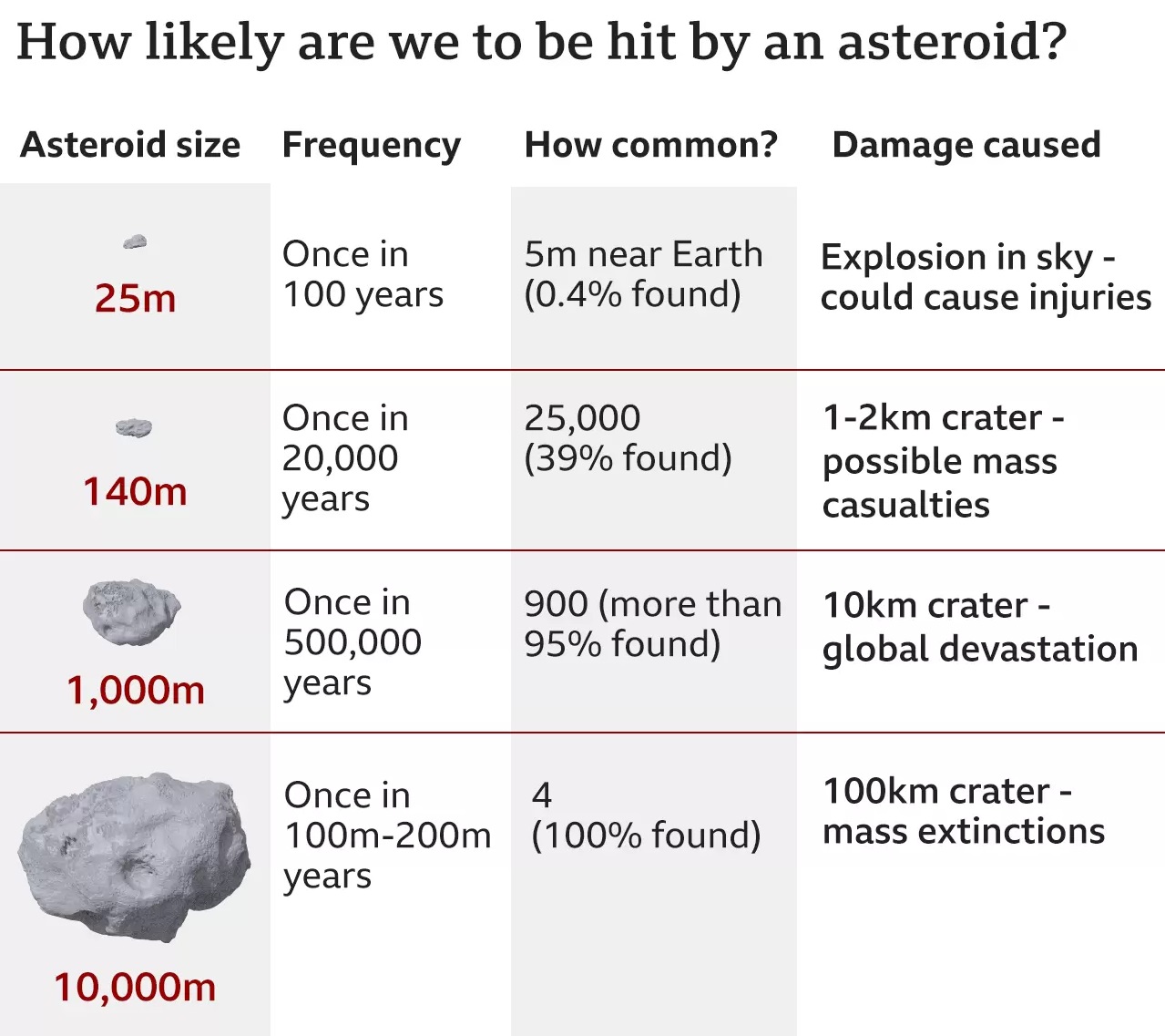Washington D.C., 27 January 2023 (GNP): The space rock, 2023 BU, which is about the size of a minibus, whirled across South America’s southernmost point soon before 03:30 GMT. It qualifies as a close shave at a distance of 3,600 kilometers (2,200 miles) from the closest approach. And it shows how there are still huge asteroids that are close to Earth but have not yet been found.
Gennadiy Borisov, an amateur astronomer who works out of Nauchnyi in Crimea, the peninsula that Russia annexed from Ukraine in 2014, only discovered this one this weekend. The following observations have improved our understanding of 2023 BU’s size and, most importantly, its orbit.
That is how, despite passing within the arc inhabited by the world’s communication satellites, which are located 36,000 kilometers (22,000 miles) above us, scientists were able to be so certain that it would miss the planet.
The likelihood of hitting a satellite is quite slim. It was correctly determined that the lowest point occurred at 19:27 EST on Thursday or 00:27 GMT on Friday. Even if 2023 BU had been directly in its path, it would have been difficult for it to cause any harm.
Also Read: COMSTECH Organizes Webinar on Understanding the Immunology of Kala-Azar Disease
The boulder, which was between 11.5 and 28 feet broad and measured between 3.5 and 8.5 meters, is thought to have disintegrated high in the atmosphere. But it would have created a magnificent blaze.
For instance, the well-known Chelyabinsk meteor, which hit Earth’s atmosphere in 2013, was a roughly 20-meter-wide (66-foot-wide) body. It caused a shockwave that broke ground-level windows. According to researchers from NASA, 2023 BU’s approach to Earth has altered its orbit around the Sun.
It was tugged by the gravity of our planet, which altered its course across space. The asteroid took 359 days to complete its circle around the Sun before coming into contact with Earth, according to the agency. Its orbit was generally circular and similar to Earth’s orbit.
For instance, the well-known Chelyabinsk meteor, which hit Earth’s atmosphere in 2013, was a roughly 20-meter-wide (66-foot-wide) body. It caused a shockwave that broke ground-level windows.

According to researchers from NASA, 2023 BU’s approach to Earth has altered its orbit around the Sun. It was tugged by the gravity of our planet, which altered its course across space. The asteroid took 359 days to complete its circle around the Sun before coming into contact with Earth, according to the agency.
Also Read: Google lays off 12,000 employees
Its orbit was generally circular and similar to Earth’s orbit. If one of these items were to strike the ground, it would cause destruction on a scale comparable to a city. According to Professor Don Pollacco of the University of Warwick in the UK, asteroids that cross the Earth’s orbit are still waiting to be found.
“2023 BU is a recently discovered object that is purportedly the size of a small bus and must have previously passed past Earth thousands of times. This time, it makes a very close pass by the Earth, passing by at a distance of barely 2,200 miles, or 1% of the distance to the moon.
It is improbable that 2023 BU will never reach the Earth’s surface; instead, it will burn up in the atmosphere in a brilliant fireball that is brighter than the full moon.
However, there are probably a lot of undiscovered asteroids out there that could impact the surface and inflict significant harm if they penetrated the atmosphere. In fact, many experts believe that such an occurrence is imminent.

